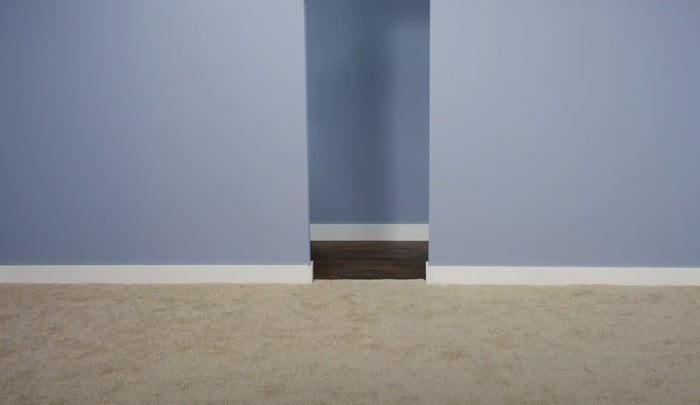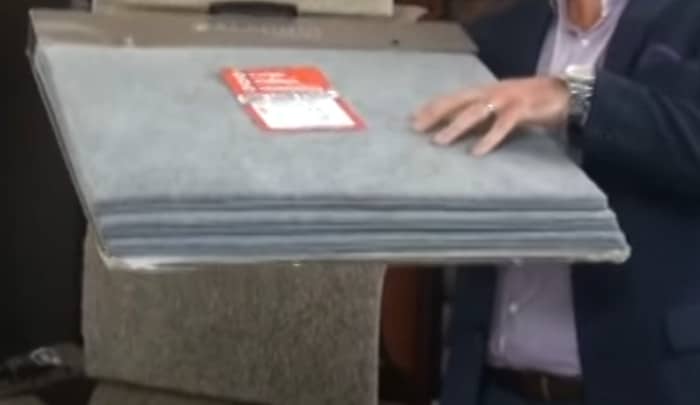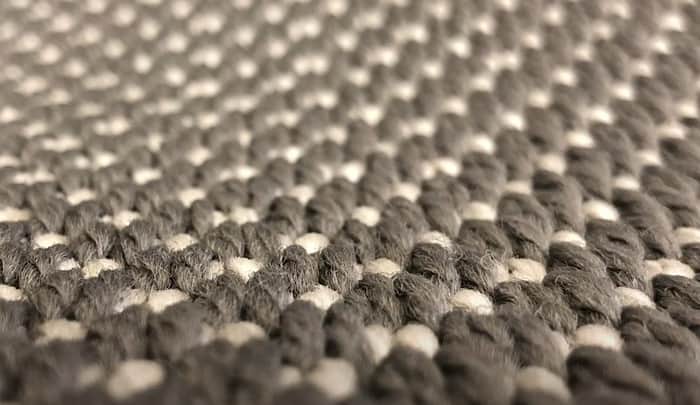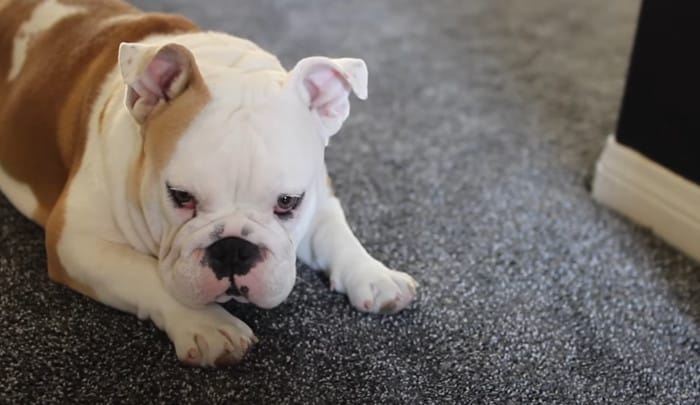The right flooring options can make all the difference when it comes to basement carpets. It’s easy to become overwhelmed by the seemingly infinite number of choices, from stain-resistant Berbers to private-label budget carpets, and selecting the ideal one for your space can feel like a challenge at times. But it doesn’t have to be if you go in knowing what features are key in making the perfect choice for your basement. So, to help you make the best carpet decision for your basement, here are our top tips for choosing the right flooring.
There are several types of carpets that work well in basements, such as loop pile, berber and cut pile. Consider factors such as foot traffic, moisture and durability when making your choice.
“As a professional with a long-standing commitment to enhancing basement environments, my experience has led me to understand moisture-resistance as a key requirement in carpet choice. A carpet with synthetic fibers offers a perfect blend of durability, mold resistance, and cost-effectiveness, making it ideally suitable for basement conditions.”
George Whitman, Architect & Interior Designer
Choosing the Right Carpet for Your Basement
Choosing the right carpet style for a basement involves many considerations and factors. Not all carpets are suitable for basements, so it is important to take into account how often the space will be used, any safety concerns, and aesthetic preferences.
Using a commercial-grade or loop-pile woven carpets may be the best option for most basements, since they hold up well to repeated foot traffic and can handle spills with ease. Wilton carpets, which are made of tufted loops and often include heavier backing layers for additional protection, are particularly popular because of their durability and versatility. Berber carpets are also a great option as they feature tight loops that don’t easily show wear or dirt, making them easy to maintain over time.

If plushness is desired, cut pile carpets should be avoided in basements as they tend to lose their shape faster when clumped with furniture or wet marks on the floor. Instead, consider textured cut-and-loop or saxony styles, which have texture and depth while still maintaining comfort. As always when installing wall-to-wall carpeting, be sure to choose high-quality padding to ensure a long lifespan and maximum softness underfoot.
No matter what type of carpet is chosen, it should always come pre-treated with stain protection and moisture repellency for extra protection against water damage. This is especially important in a basement setting since moisture buildup can quickly cause carpet damage.
With careful selection of the right carpet style and proper installation techniques, homeowners can create an attractive basement flooring solution that will stand the test of time.
Now that you know more about choosing the right carpet for your basement let’s move on to selecting the right style in our next section.
Selecting the Right Style
Selecting the right style of carpet for a basement is an important decision since it will largely determine the look and feel of the space. There are a few key things to consider when picking out the right flooring style, including how to transition between different wood floors if you’re combining carpet with hardwood areas of carpet for a basement is an important decision since it will largely determine the look and feel of the space. There are a few key things to consider when picking out the right flooring style. For example, ease of maintenance should be a top priority since basements often have more moisture or water issues than other areas of the home. Consider the types of activities that will take place in this space, such as high foot-traffic or pets, and choose a style that can withstand regular wear and tear. It’s also important to think about how a carpet color or pattern may impact the overall aesthetic. Darker colors can make a room look smaller so choose neutral colors if possible for a larger and brighter looking living space.
Beyond selecting a color and patterns, there are all types of textures of carpets to choose from. All carpets come with some level of cushion or padding, but extra padding may be necessary if comfort is desired. Carpet fibers are usually placed in pointed, looped or cut piles giving rooms different feels depending on the texture chosen. Looped carpets are ideal for high traffic areas because they tend to be quite durable, while cut pile carpets offer more cushion and softer feeling underfoot. Selecting the right style of carpet for a basement is an important decision since it will largely determine the look and feel of the space. There are a few key things to consider when picking out the right flooring style, including how to transition between different wood floors if you’re combining carpet with hardwood areas takes careful consideration but it can dramatically enhance any living space.
The next section will discuss padding options for basement carpets and how choosing the proper padding can affect both aesthetics and function.

Padding Options
When choosing the best carpet for your basement, don’t forget to factor in the padding and underlayment. Padding helps extend the life of your carpet and provides insulation, acoustic benefits, and support performance. The right kind of padding can make a world of difference when it comes to comfort, noise reduction, and safety.
On one side of the debate, thicker padding tends to be better as it offers greater cushioning. Additionally, many professionals suggest selecting a type of padding that has some moisture-resistant properties. This type of padding will help keep moisture away from your carpet which is important since basements are on the lower levels of your home – flooding and leakage could occur from time to time.
On the other side of the debate, some argue that less-expensive thinner padding is just as effective as thicker options. Thinner padding may be sufficient for lighter traffic areas like hobby rooms or playrooms, but it would not hold up to heavy foot traffic areas like staircases or walkways.
Lastly, it’s important to consider installation options when selecting a type of padding. It is recommended to choose a method that allows both carpet and pad to settle into each other so they become essentially one single layer. This will create stability within the flooring system and ensure maximum comfort level.
No matter which direction you choose to go in terms of padding options, researching all aspects thoroughly can ensure you end up with optimal results in terms of comfort, safety and durability over time.
Now that we’ve discussed options for padding, our next section will discuss considerations when choosing types of carpets for your basement environment.
Carpet Types
When considering basement flooring, carpet is one of the most popular options. But with a multitude of different types, it can be difficult to decide which type of carpet is best for your basement. It’s important to understand the difference between carpet vs. rug to make the best choice for your space flooring, carpet is one of the most popular options. But with a multitude of different types, it can be difficult to decide which type of carpet is best for your basement. Knowing what carpets are available and their benefits and limitations can help you decide which material is right for your project.
The two main categories of carpet are looped pile and cut pile. Loop pile carpets have their yarn loops uncut, resulting in a flat texture. This type of carpet is more durable than cut piles and is less prone to crushing or flattening in high-traffic areas. Berber carpets are an example of a looped pile carpet that generally consists of flecked yarns and heavier loops. It’s also stain resistant and easy to clean, making it a great option for families with small children or pets.
On the other hand, cut pile carpets feature yarns that are trimmed at the surface creating tufts on the carpet. This style has a plush and fluffy look and feel, providing comfort underfoot without sacrificing durability. Saxony carpets are a popular choice in this category with an even level surface finish ideal for bedrooms and living rooms.
While both looped and cut pile carpets offer different advantages and disadvantages based on the room or space they’re installed in, both provide great options for basements because they are resilient to heavy foot traffic use, dirt and dust buildup, as well as mildew or moisture buildup in damp basements.
Knowing the different types of carpets available helps narrow down your search when looking for the perfect flooring solution for your basement. In the next section we will discuss selecting the right materialtypefor your basement carpeting needs based on factors like cost, performance, durability, aesthetics, environmental impact, water resistance, and allergy risk.
Based on Material
When making the decision about which carpet is best for basements, considering the material that it is made of can be a helpful starting point. The material impacts both the look and feel of the carpet as well as its performance in terms of stain-resistance, durability, and ease of cleaning. Common materials used to make carpets include wool, nylon, polyester, olefin/polypropylene, and triexta.
Wool carpets are one of the most expensive options, but they offer unparalleled softness, stain-resistance, and durability. Nylon is also a popular choice because of its incredibly durable nature—it can last up to 20 years with proper care. Polyester carpets are known for their excellent stain resistance and affordability. Olefin or polypropylene carpets are extremely affordable and resistant to water and mildew. Finally, triexta is a relatively new type of fiber that’s known for its softness, strength, and outstanding stain-resistance attributes.

Ultimately, it’s important to weigh the pros and cons of each material according to your lifestyle needs in order to select the right material for your basement space. Moving forward with this discussion of finding the best carpet for basements, we will now focus on making an informed choice based on color.
Key Points to Remember
When it comes to selecting the best carpet for a basement, homeowners should consider the material it is made from. Options include wool, nylon, polyester, olefin/polypropylene and triexta. Each material has its own pros and cons regarding cost, softness, stain resistance, durability and ease of cleaning that should be weighed according to lifestyle needs. The next step in making an informed choice for basement carpets is to focus on color.
Based on Color
When it comes to basements, the most common color-based flooring choice is carpet. While some homeowners may seek a darker hue in an effort to hide dirt and spills, this isn’t necessarily the best idea. Darker carpets tend to show wear much more quickly making it difficult to keep your basement looking neat and tidy. If you do choose a dark color, consider using an area rug on top for added protection.
On the other hand, carpets that are too light can be difficult to keep clean as well. Lighter carpets tend to show dirt more clearly, making them unsuitable if you have pets or children who are prone to spilling. However, when properly maintained a lighter carpet can provide a modern and stylish look in your basement.
No matter which way you decide to go, pick a color that you won’t tire of easily as replacing carpet in your basement will be a huge undertaking.
Now that we’ve looked at color options, let’s move on to pet considerations when choosing the best carpet for your basement.
Pet Considerations
When selecting the best carpet for a basement, pet considerations should be taken into account. Carpets with shorter fibers are more durable against pet accidents, however they do not provide as much cushion or warmth as longer fibers. It’s crucial to know how to remove dog urine smells from carpets if you have furry friends in your home are more durable against pet accidents, however they do not provide as much cushion or warmth as longer fibers.
For those who have pets and want comfort, there are options available such as olefin and nylon carpets that are known for their resilience. Both stain and soil resistance are important factors to consider when looking for the best carpet for your basement if you own pets. However, carpets made of man-made fibers tend to be less comfortable than natural fibers.
Additionally, it is important to remember that all carpets can fade from UV exposure. If your pet spends a lot of time in the basement, natural fiber carpets may be prone to fading quicker than synthetic options. This is something to keep in mind when weighing your decision about which type of carpet to install.
Overall no matter what option you choose for your pet-friendly basement, be sure that anti-microbial treatments have been applied before installation. This will help protect against smells, bacteria, allergens, and any other substances that could cause health issues down the line.
Now that we’ve discussed pet considerations when it comes to selecting the best carpet for a basement, let’s move on and discuss how to select a flooring option in terms of style and budget in the next section.

Basement Floor Selection
When choosing the right flooring for a basement, it’s important to consider the pros and cons of different types of carpet. Depending on your lifestyle and preferences, each type of floor has its own advantages and drawbacks that should be evaluated.
Berber Carpet: This popular option is durable, resilient and available in a variety of colors that can complement any interior design. Berber resists staining and comes in two varieties: looped (made up of small rows of loops that create a raised pattern) and cut (shorter strands creating a flatter design). The advantage of Berber carpet is that it hides dirt more than other carpets, however it is susceptible to snagging due to its looped construction.
Frieze Carpet: This style features twisted fibers throughout the rug creating an informal yet stylish look. It stands up well to traffic and is available in a variety of textures. Frieze can also be resistant to stains but may show footprints if not vacuumed regularly.
Saxony Carpet: For those looking for a luxurious look, Saxony carpets are plush with tightly packed fibers that give off an elegant feel. Its thick yarn makes this style better suited for low-traffic areas as it tends to flatten over time from foot traffic. Additionally, Saxony carpets can show vacuuming lines.
Shag Carpet: This choice offers a modern twist on classic carpet styles with long fibers that create texture and depth. Shag carpets are very soft underfoot but wear quickly due to their length, so they may need replacing more regularly than other choices.
In conclusion, when selecting a basement carpet there are many things to consider such as the level of traffic within the room, your budget, overall aesthetic preference and level of maintenance required. Understanding the benefits and disadvantages of different types of carpet will help you make the best decision for your space. Additionally, knowing how to clean sticky laminate floors can be useful if you’re considering a mix of flooring types in your basement.
Common Questions and Their Answers
Are there particular styles or types of carpets best suited for basements?
When choosing the best carpet for a basement, there are certain styles and types of carpets that offer greater benefits than others. Consider opting for loop pile carpets such as Saxony or textured cut pile carpets like Frieze, which feature short and tight tufts that will resist flattening and allow for easier cleaning. Low-profile carpets such as berber are also great options due to their densely-packed fibers which provide better insulation against dampness, making them ideal for rooms with high humidity levels. Lastly, olefin-based carpets tend to be highly durable and resistant to moisture and mildew.
Are there any pros and cons to different types of carpets for basements?
Different types of carpets have different pros and cons when it comes to basements. For example, loop pile carpets are highly durable since they are made with loops of yarn, which makes them resistant to abrasion and thus suitable for basement floors that are likely to face heavy traffic. On the other hand, they can be difficult to clean since dirt and debris can get tangled in the loops.
Frieze carpets, on the other hand, offer a smooth, luxurious feel and are available in a variety of colors and patterns. They also provide good insulation to maintain heat in the basement during colder months. However, their thick and fluffy fibers make them prone to crushing, which can cause permanent damage if not handled properly.
It’s important to consider all the pros and cons before deciding on the best carpet for your basement. Ultimately, the perfect solution will depend on how much you’re willing to invest in terms of cost vs. quality as well as your lifestyle needs.
What factors should be considered when choosing the best carpet for a basement?
When choosing the best carpet for a basement, there are several factors that should be taken into account. First, consider your budget, as this will determine which type and quality of the carpets you can afford. Second, look into how much water resistance you need; many carpets are water resistant or waterproof, helping to protect against spills or leaks. Third, think about how long you plan to keep the carpet in your basement; higher-quality options may be more expensive but will last longer. Fourth, consider how much sound insulation is desired; a thick padding or underlayment beneath the carpet helps muffle sound. Fifth, consider any special considerations such as allergy sufferers due to pet hair or airborne allergens; in this case, carpets made from natural fibers may reduce allergic reactions. Finally, reflect on the color scheme of the space and pick a shade that won’t clash with other elements in the room. The right carpet will help ensure a comfortable and inviting atmosphere in your basement space.
References
https://www.wikihow.com/Install-Carpet
https://www.thespruce.com/overview-of-carpet-choices-1315092





I once invested in extremely fancy carpets for my basement, only for my grandkids to spill juice and create a mess. Stain-resistance should be non-negotiable!
Yes Quincy, looks like you learned the hard way too. When it comes to basements, functionality should always take priority over luxury.
Absolutely Giles, in my experience, I’ve had many clients regret choosing carpets based purely on looks without considering the unique needs of a basement space.
From many years in the field, I can’t stress enough on how crucial it is to consider the unique needs of a basement space before rushing into buying carpets based solely on aesthetics. One of my clients chose a plush white carpet without considering moisture issues. Needless to say, within weeks the carpet absorbed moisture from the concrete floor below turning it into an unpleasant moldy mess.
It’s always an adventure when tackling basement renovations, particularly in terms of flooring selections. I agree that people often overlook the unique features of basement spaces while choosing carpets. In my second home renovation, I invested in an expensive Persian carpet for the basement and was disillusioned when it fell prey to basement humidity. From that moment forward, moisture became my primary concern while selecting basement flooring, regardless of appearance or cost.